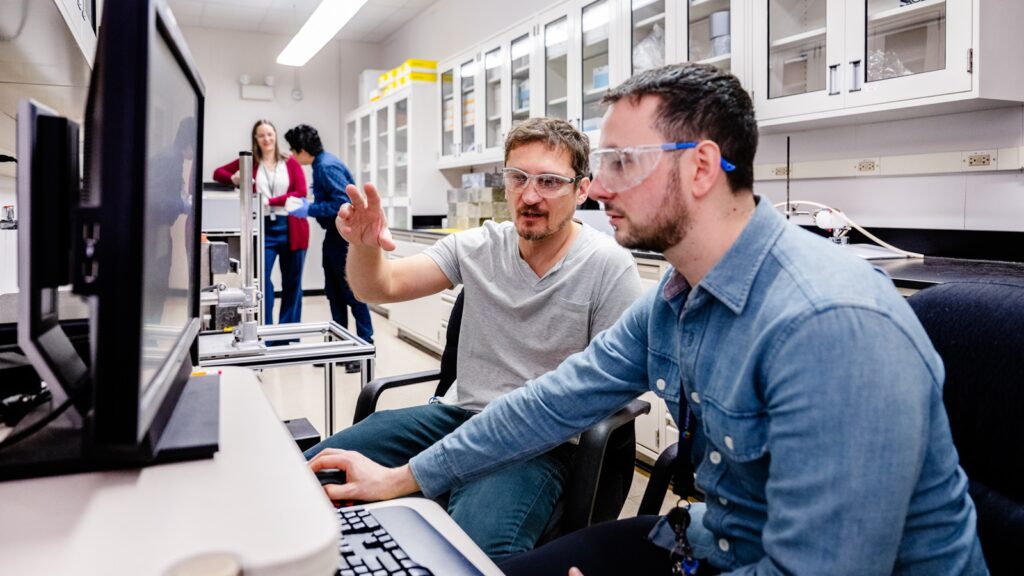Throughout the United States, nuclear reactors produce a huge amount of electricity and a significant amount of nuclear fuel used.
This material is often treated as waste, but more than 95% of the energy potential remains undeveloped. Currently, scientists at Argonne National Laboratory are partnering with the private industry to realize their nuclear fuel recycling promises, with support from the Department of Energy (DOE).
This innovative approach to energy reuse can reconstruct how the US manages nuclear resources, reduce radioactive waste, and extract more energy from existing fuel sources.
The ultimate goal: to make nuclear fuel a cost-effective and scalable solution for a sustainable energy future.
Promising Industry Partnerships
Argonne is working with Wisconsin-based company Shine Technologies to develop a new chemical process that can efficiently separate valuable elements from spent nuclear fuel.
At the heart of this project is a high-speed spinning device-centrifugal contactor designed to separate mixed liquids based on density. These compact and efficient machines make the recycling process safer, faster and easier to adapt to industry needs.
Collaboration bridges laboratory research with practical applications, aiming to create processes that nuclear energy producers can adopt without excessive cost or complexity.
Nuclear fuel recycling technology and safety hurdles
Recycling used nuclear fuel is not easy. The material is very radioactive and continues to release heat for a long time after leaving the reactor.
This means that it needs to be stored and cooled for years before it can be safely processed. Still, recycling facilities should be equipped with shielding systems and radiation management tools to protect workers and the environment.
Security is another major concern. Every step in the recycling process from storage to isolation must be designed using safeguards to prevent unauthorized access or misuse.
By applying “design-by-design protections,” Argonne researchers incorporated security features directly into the technology from the start, ensuring compliance with national and international standards.
Economic viability and future demand
Beyond technical aspects, nuclear fuel recycling must also make economic sense. This process requires the production of materials with actual commercial value.
Fortunately, some of the recycled products, such as certain radioisotopes, can be used in advanced nuclear reactors, space exploration, or even medical diagnostics.
For example, isotopes recovered during nuclear fuel recycling could enhance deep-sea missions and support life-saving imaging technologies.
The increased demand for these by-products will result in a more advantageous economic recycling and encourage investment in new facilities.
It will be adapted to tomorrow’s nuclear reactor
Not all reactors are created equally. Future nuclear power plants, especially the next generation design, will require a variety of ways to use fuel and recycle methods tailored to specific materials.
Argonne experts set their own terms to predict these needs. By modeling fuel behavior in different reactor types, recycling strategies can be tailored to adapt to evolving energy technologies.
This kind of foresight is essential. Today’s research shows the foundation for facilities that can one day recycle fuel from advanced modular reactors, which will help the US achieve its clean energy goals.
Lab Innovation Drives Scalable Solutions
Leading the charging is Peter TKAC, a nuclear chemist at Argonne. The team is pioneering small-scale testing to replicate the harsh environments of real-world nuclear fuel recycling.
A van de Graaff accelerator, a type of particle accelerator, is used to generate low levels of radioactivity to study how chemicals behave under radiation.
This controlled environment allows for rapid development without the risk or cost of working directly with spent nuclear fuel.
TKAC’s group leverages 3D printing to quickly prototype and test new parts of the centrifugal contactor. This flexibility not only accelerates development, but also makes designs easy to adapt to industrial use.
Laying the foundation for a future for clean energy
This is not the first collaboration between Argonne and Shine. Previously, the two teams worked together to improve medical isotope production, leading to life-saving innovations in diagnosis and treatment. Now they bring that same expertise to the nuclear energy sector.
By improving and expanding nuclear fuel recycling technology, the partnership addresses one of the key obstacles to expanding the US nuclear power generation, or long-term waste management.
If successful, this project can significantly reduce the amount of radioactive waste, expand the usefulness of existing fuels, and help ensure a rich and clean energy supply for generations.
Source link

